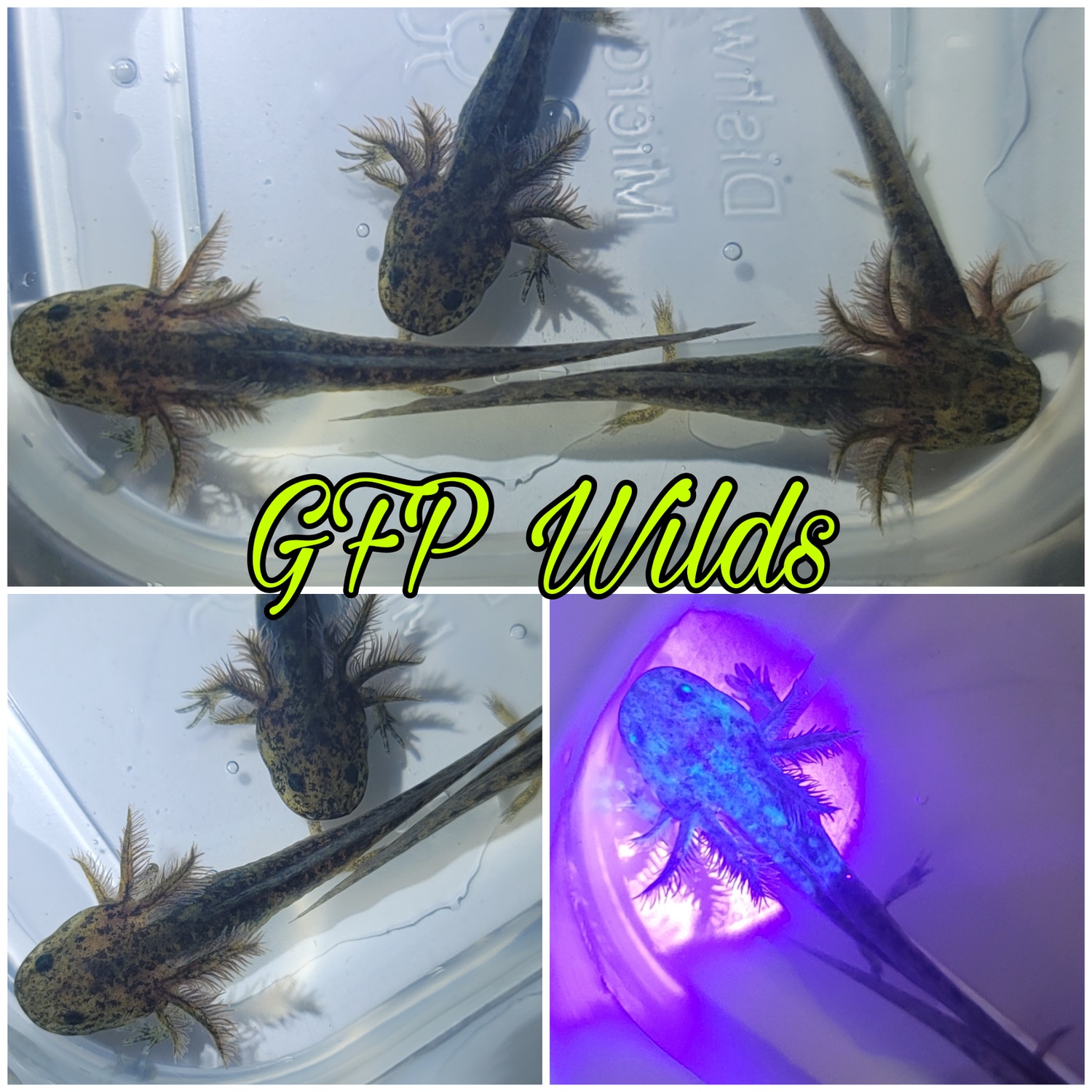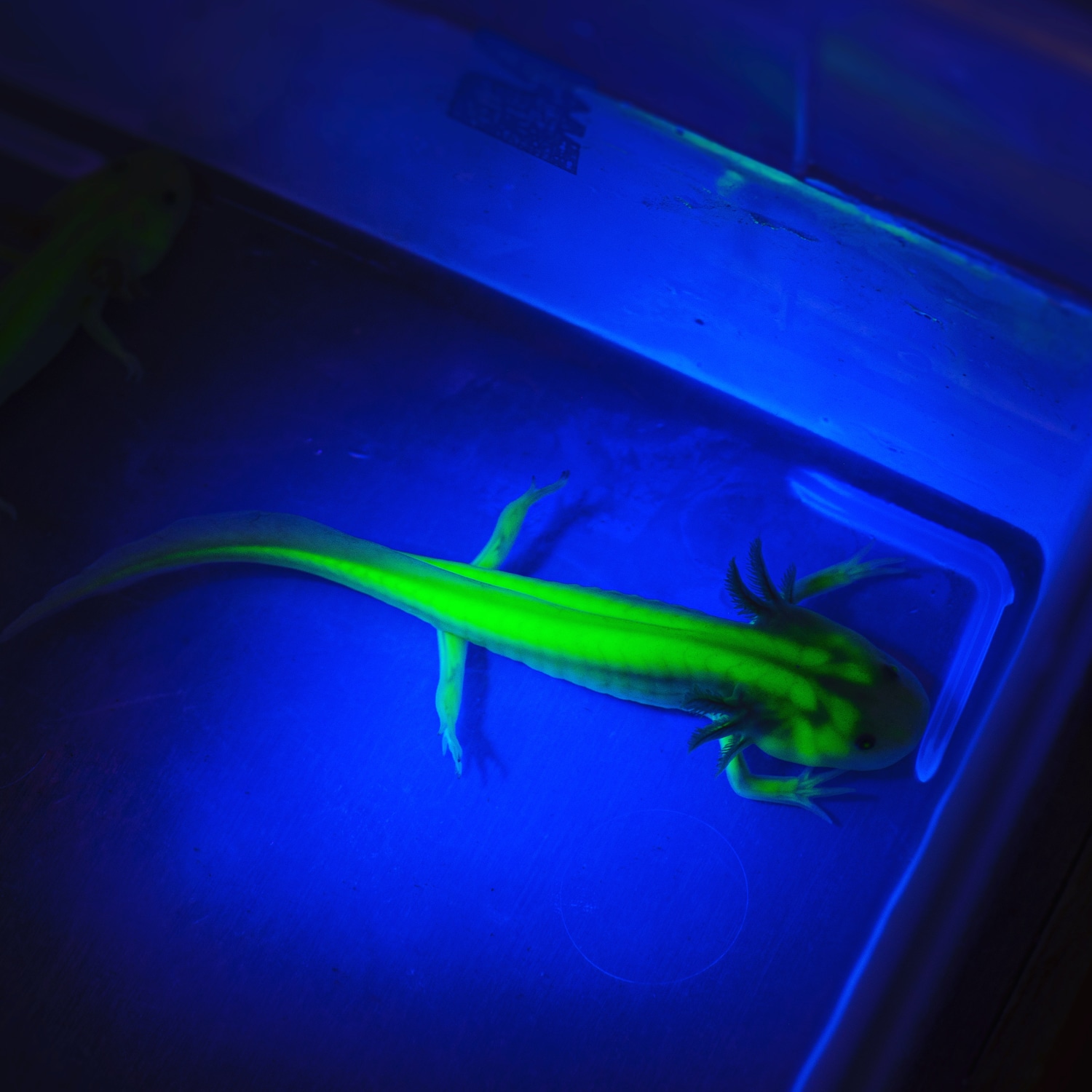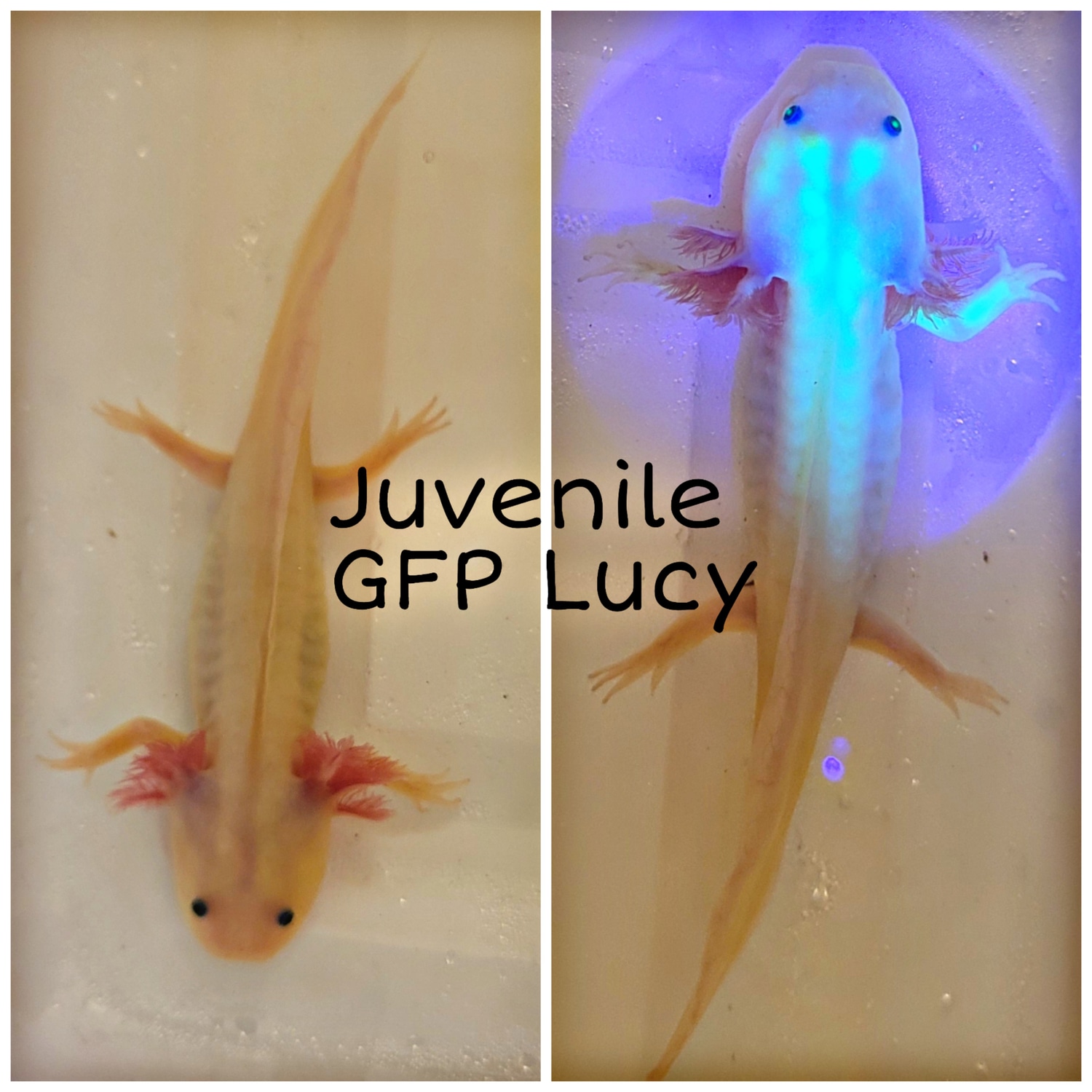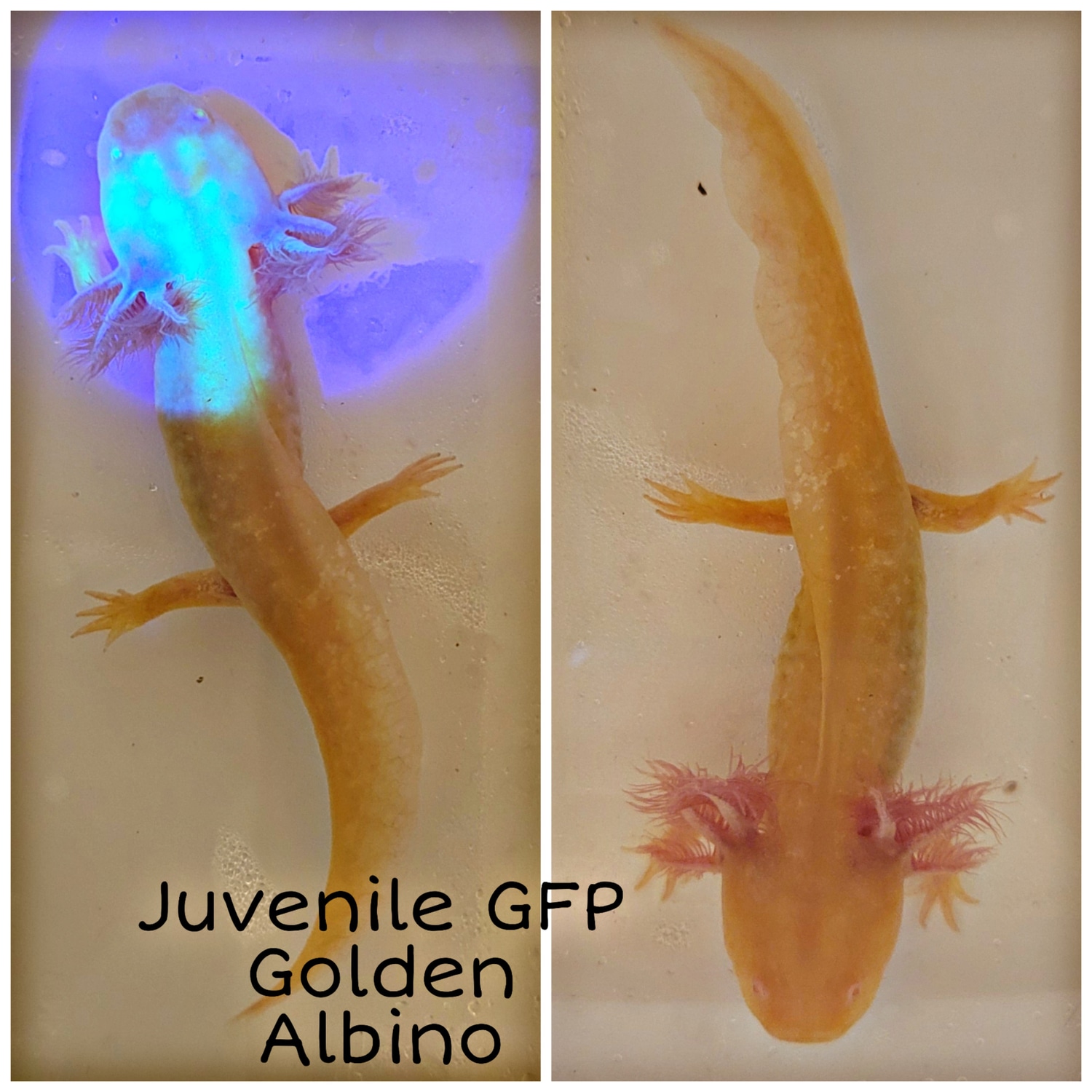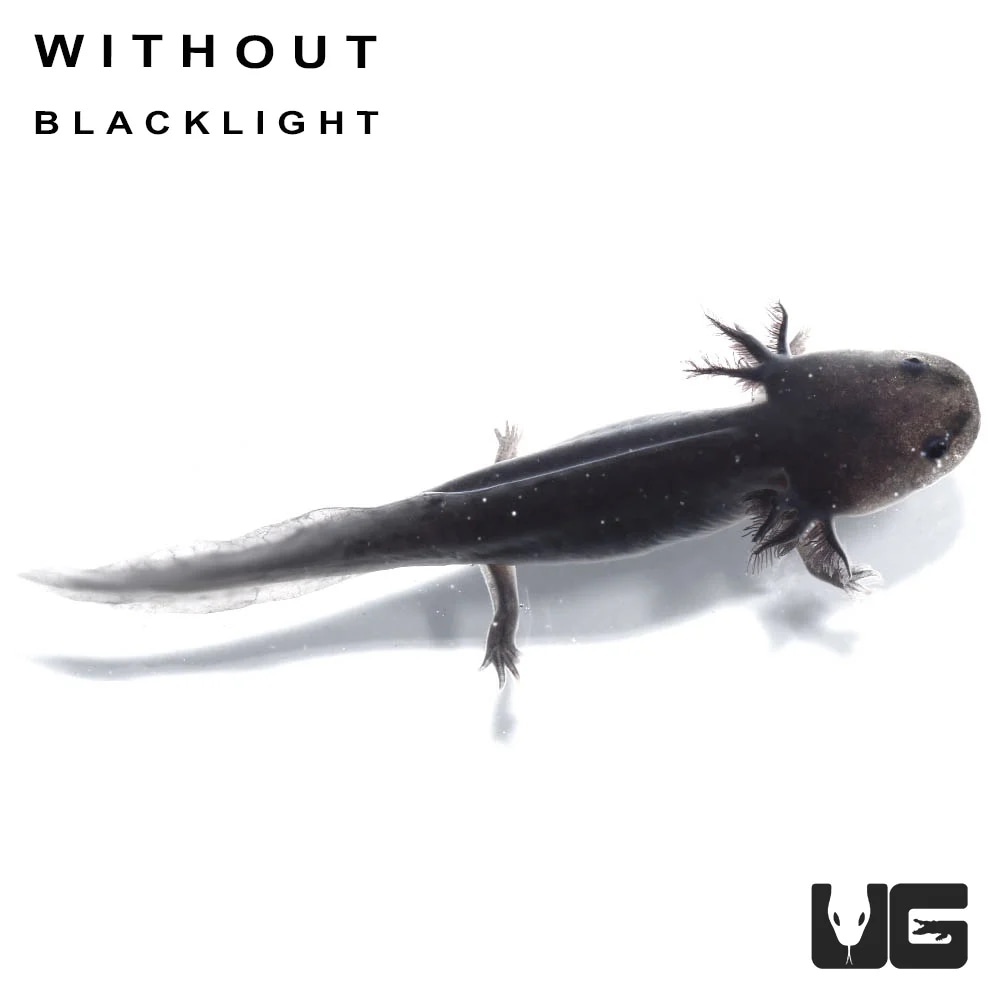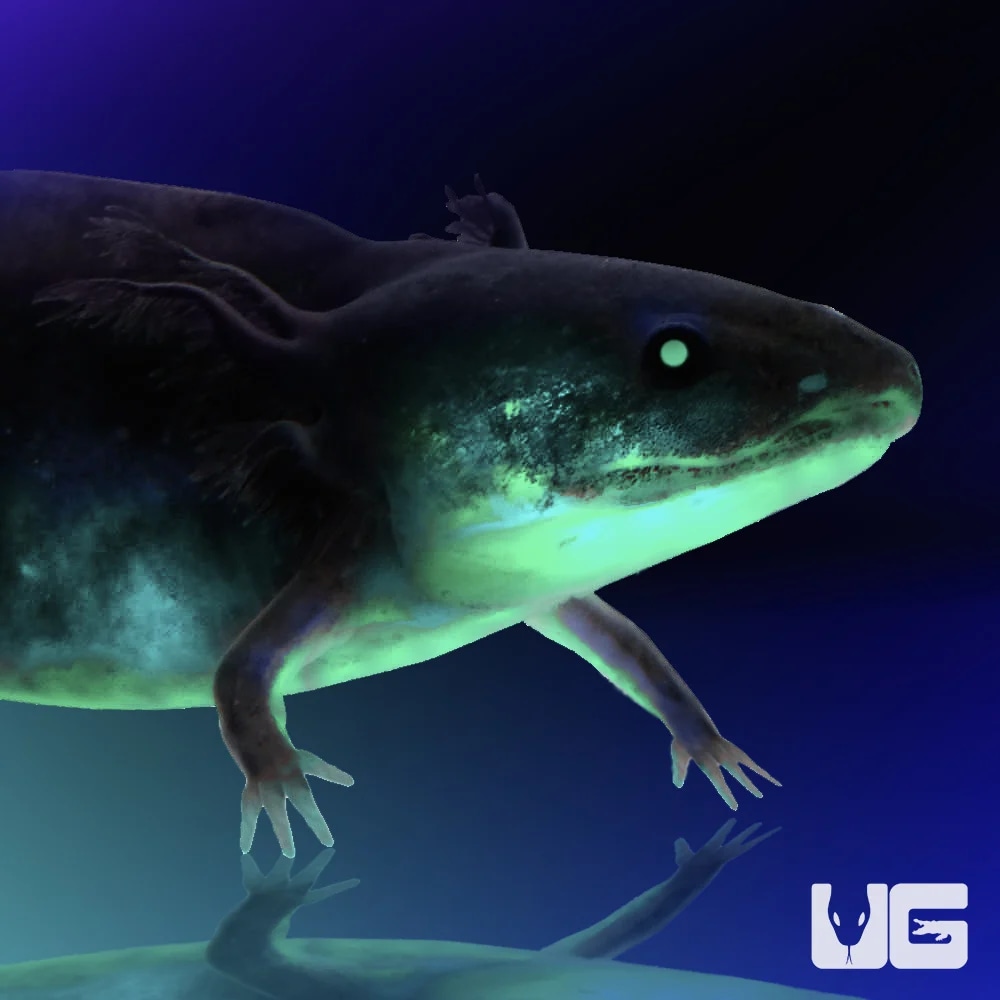Gfp
Type: Incomplete Dominant
First Produced By: Elly M. Tanaka of Max Planck Institute
Aliases: Green Fluorescent Protein
Issues: N/A
First Produced In: Unknown
Availability: Common
Last Updated: 2022-02-21
Do you have any suggestions or corrections for this article?
Click here to contribute feedback
History
Osamu Shimomura was the first person to isolate GFP and to find out which part of GFP was responsible for its fluorescence. His meticulous research laid the solid foundations on which the GFP revolution was built. In 1960, shortly after he arrived in Princeton from Japan, Shimomura started studying the bioluminescence of the crystal jellyfish, Aequorea victoria.
This jellyfish produces green bioluminescence from small photoorgans located on its umbrella. When the rings of twenty to thirty jellyfish are squeezed through a rayon gauze, a faintly luminescent liquid called squeezate is obtained. Shimomura went to Friday Harbor, Washington, to collect this squeezate and to extract from it the substance responsible for its luminescence.
He found that in order to bioluminesce Aequorea releases calcium ions. These bind to a protein that he called aequorin, which release blue light upon calcium binding. The blue light is absorbed by green fluorescent protein, which in turn gives off the green light as shown below.
Douglas Prasher was the first person to realize the potential of GFP as a tracer molecule. In 1987, he got the idea that sparked the GFP revolution. He thought that GFP from a jellyfish could be used to report when a protein was being made in a cell. Proteins are extremely small and cannot be seen, even under an electron microscope.
Elly M. Tanaka of Max Planck Institute has created a transgenic GFP axolotl. Although axolots are endangered, they hold significant promise for human amputees. The salamander has the ability to regrow injured or missing parts of its body such as limbs, jaws, skin, organs, and parts of its brain and spinal cord through an embryo-like growth process. Scientists conclude that once they understand how a salamander can regrow a full limb as opposed to just a stump, they can introduce this biological technique to human amputees.
In order to monitor the axolotl’s limb regeneration process, the Max Planck scientists have inserted a green fluorescent protein into a mutant axolotl that lacks skin pigment. Since the salamander has clear skin, it is very easy to identify how the group of cells at the wound, the blastema, can multiply and form a new limb. Experts predict that humans with missing or damaged limbs will be able to regrow them within ten to twenty years.
Appearance
Proven Lines
No known proven lines
Related Traits
No known related traits
